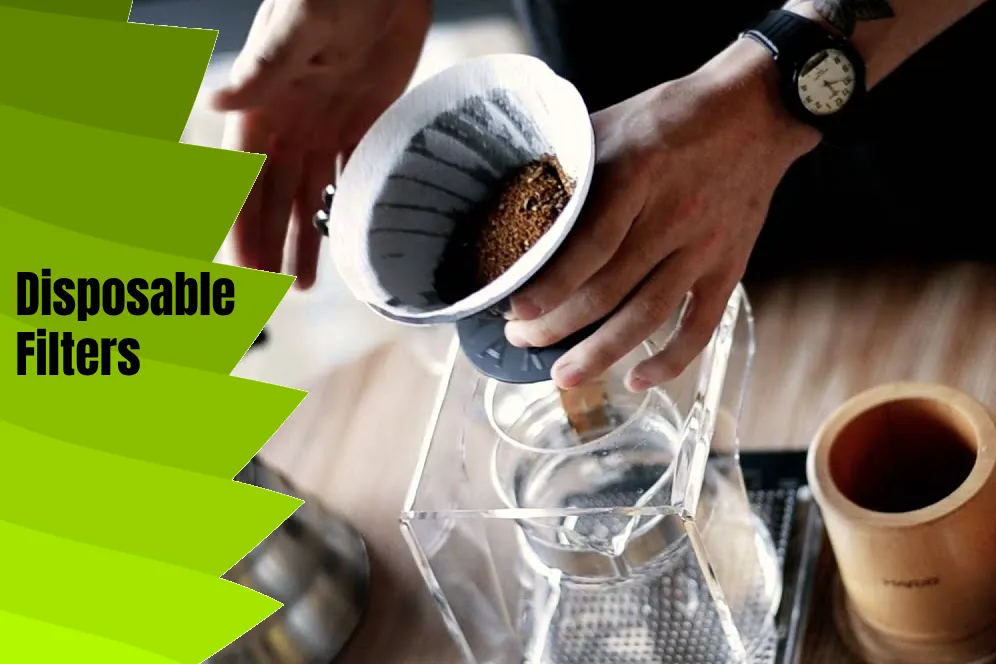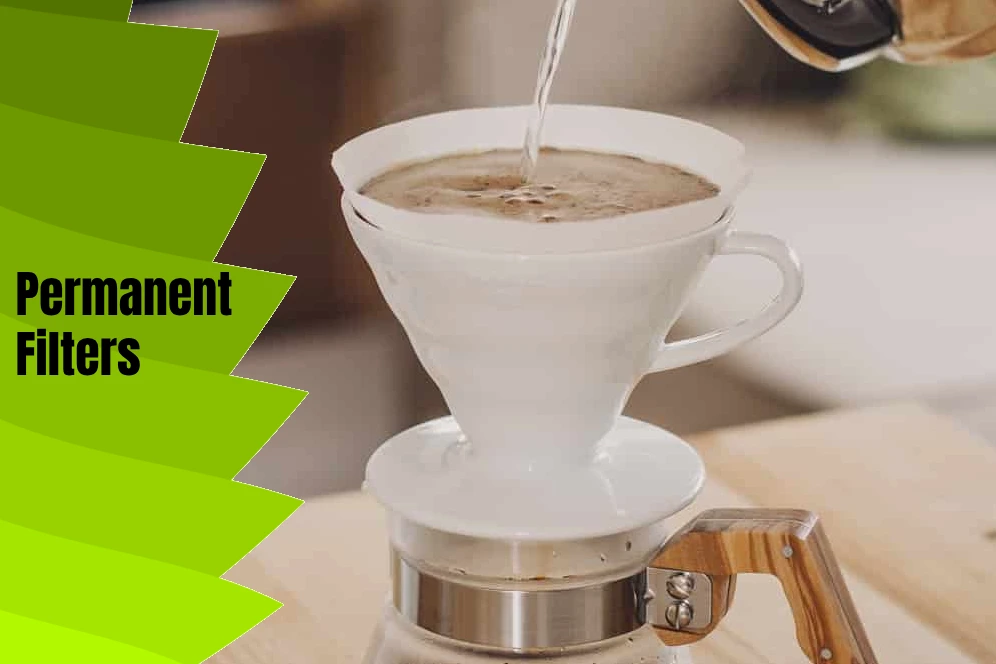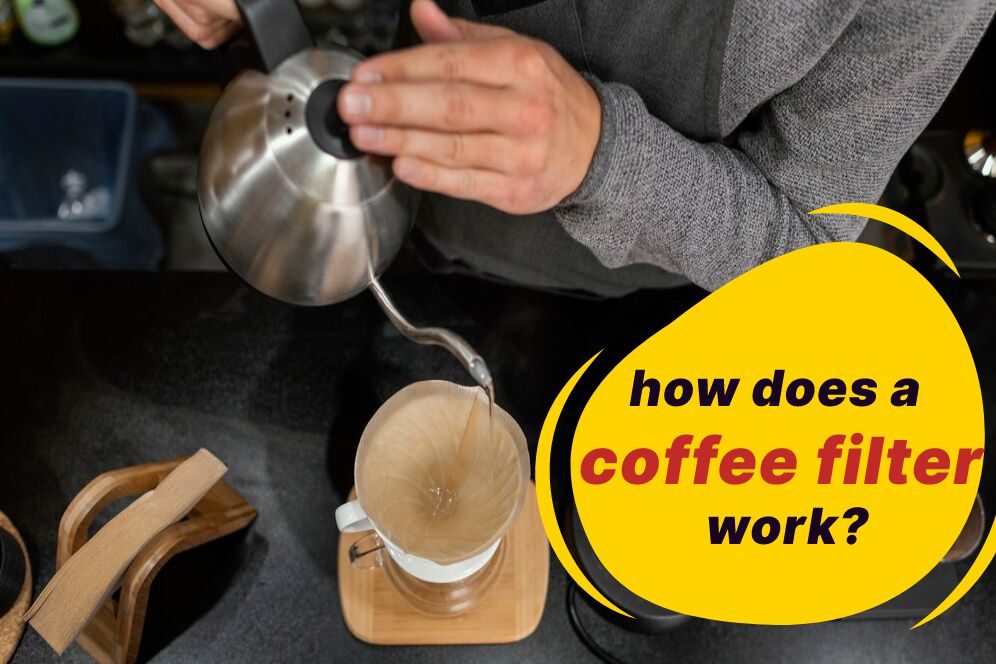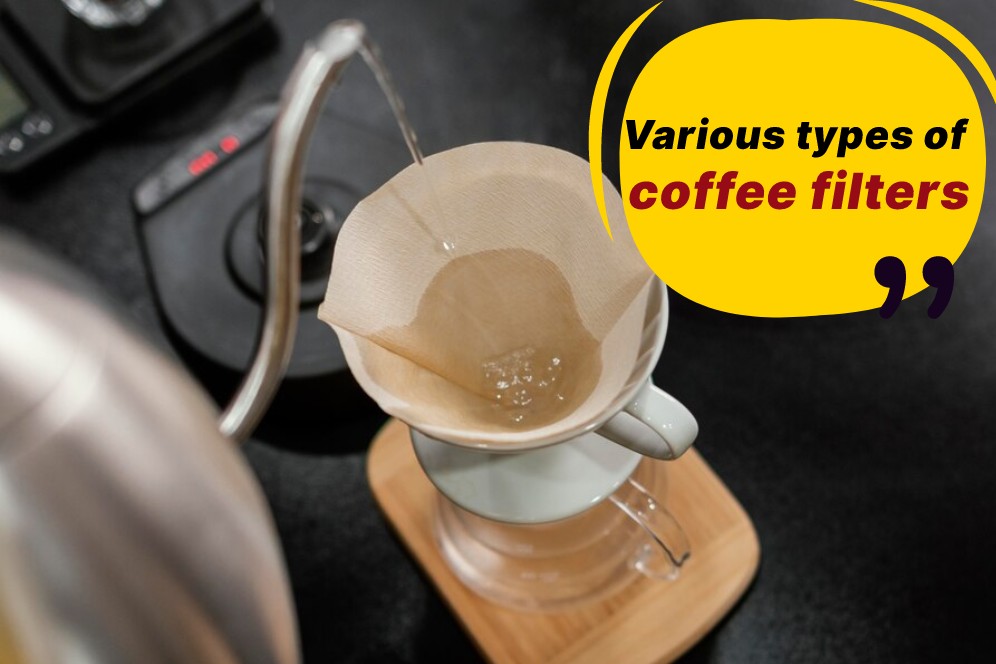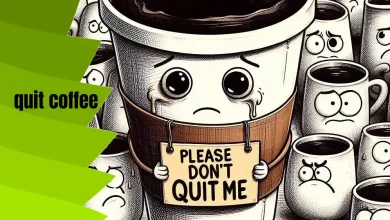A Close Look at Coffee Filters and Their Differences (Paper, Metal, Cloth)
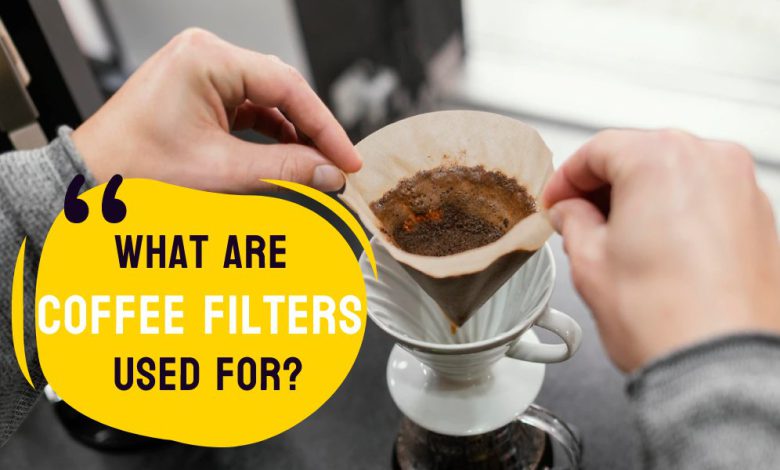
Coffee is now a mainstay of every community, serving as the centerpiece of breakfast and supper menus. After a long, stressful day, drinking coffee is one of the most calming activities a person can engage in.
When it comes to making a significant and clean cup of coffee, there are several elements to consider: the coffee filter.
Because coffee drinking is prevalent among people all over the globe these days, we’d like to discuss coffee filters, which may be a valuable aspect in certain situations.
You will need this information if you are planning to brew coffee for the first time with equipment that requires the use of coffee filter paper. Please stick with us for the duration of this essay:
Contents
Who invented the coffee filter?
In earlier times, making coffee was more complex. Ground coffee was placed in a pot or a similar container, and then hot water was poured over it. After steeping the coffee, it was strained using a cloth to filter out the coffee grounds. It was quite cumbersome, and almost always left something “dirty” in the cup afterward.
In 1908, Amalie Auguste Melitta Bentz from Dresden was so annoyed by the bothersome coffee grounds that she came up with a solution. Her first approach involved taking a brass pot, creating holes at the bottom, and covering it with a blotting paper. It was a good idea, but proved to be too labor-intensive in the long run. Therefore, she created a pre-made coffee filter holder with cut-out, flat-bottomed filter papers, which she ultimately patented.
While the holders were initially made of aluminum or metal sheets, filters were replaced with Chinese and ceramic filters in the 1930s. Bentz then founded the Melitta company, which is still recognized today and bears her name.
Disposable Filters
A disposable filter (filter bag) is placed in a holder made of materials such as china, plastic, or stainless steel. The filter paper is composed of cellulose fibers that create very small pores. The paper must be chlorine-free and whitened using the TCF process, as non-white filter paper can taint the taste of the coffee. If no other option is available, it can be rinsed several times before use.
After use, the paper (if whitened) is discarded in residual waste, and coffee grounds can be placed in an organic waste bin or on a compost pile. The filter holder can, of course, be reused. Disposable filter bags are used in methods such as pour-over and in regular coffee makers.
Permanent Filters
Permanent filters are typically made of materials such as plastic, china, cotton, brass, or stainless steel. The choice of material is entirely up to you. However, porcelain, stainless steel, and brass filters have greater durability compared to plastic filters. Due to larger pores, permanent filters retain significantly less oil and grease compared to disposable filters. Here is a collection of permanent filters:
- China filters: Often have a base with a maximum of three holes through which the coffee is filtered. However, filtering occurs only when a filter bag is placed in it; otherwise, coffee grounds pass through the holes during brewing.
- Brass filters: Easy to clean and also have antibacterial properties.
- Stainless steel filters: Retain their shape and can easily be placed in the dishwasher
- Cotton filters: Environmentally conscious and ensure a very authentic coffee flavor.
Coffee filter: definition and meaning
When making coffee, coffee filters are used to filter the grounds. These filters are composed of disposable paper, cloth, plastic, metal, and other materials (reusable). In reality, this filter enables the coffee liquid to flow through while preventing the passage of pulp and beans, resulting in a pure coffee that is free of pulp and beans.
The main material used in the coffee filter also determines the life of the filter and the taste of the coffee. Some filters can be used once, some can be used for a lifetime.
Okay, you’ve figured out what a coffee filter is and the many coffee filters. Let’s look at how it works and get more acquainted with the different kinds in detail. If you’re looking for a gift for a coffee lover, this product is the best choice.
How does the coffee filter work?
If you want to prepare filter coffee at home, you must use a coffee filter. These filters are used to transfer the aroma of the ground coffee to the water. These filters prevent the entrance of ground coffee particles into the water.
Therefore, the amount of sediment formed when drinking coffee is reduced
Now, let’s look at the reasons for using this filter:
First and foremost, as you are probably aware, coffee includes pulp, and the first thing the filter does is separate the pulp from the rest of the coffee.
Second, the usage of filters affects the quantity of extraction and the flavor of the coffee in the cup of coffee that is served.
The oily components of coffee, referred to as diterpenes, are beneficial to the body and have anti-inflammatory effects that make it such a popular beverage. While paper filters will remove these components from the coffee, metal or nylon mesh filters will leave these components in the coffee.
Various types of coffee filters
Following up on what we learned in the previous part, there is an essential item to consider in the brewing process for coffee: there is a coffee filter included with the set.
Before you begin the process of filter buying, you should examine your preferred brewing techniques and the characteristics you want in a cup of coffee. In some instances, one kind of filter may be preferable to the other two depending on your coffee machine and personal preferences.
More information on the applications, advantages, and tastes generated by each kind of filter will be provided in the coming weeks.
First, you should know that we have three types of coffee filters. We will explain all of them:
- Paper Filters
- Metal Filters
- Cloth Filters
Paper filters
One kind of coffee filter that is accessible is a paper filter, which can be used to generate a clear and light cup of coffee that is full of rich tastes and has no pulp. You must change these filters after each usage since they are not reusable.
To prepare a delicious filter coffee, it is very important to choose the right paper as well as the right coffee shot.
The filter paper, the hardness of the water you use, the degree of grinding of the coffee beans will significantly affect the taste of the coffee. When making filter coffee at home, you should consider all these components.
Tip: Paper filters can only be used once. When exposed to water a second time, they can tear.
How to choose coffee filter paper?
Filter coffee paper is divided into 2 and 4. Some brands may give measurements in millimeters. If you do not know which number is suitable for your coffee machine, You can use the user manual.
| Advantages | disadvantages |
| It is both inexpensive and widely accessible. | It is not reusable and is less environmentally friendly. |
| It’s simple to clean up. | |
| It’s possible to be healthy. | It’s necessary to keep purchasing them. |
| Produce cups of coffee that are clear and bright in color. | |
| Even the most beautiful grounds are barred from passing through. | It might have a papery flavor to it. |
What does coffee filter paper number 2 mean?
Coffee filter paper number 2 is suitable for brewing two cups. However, it does not mean that you can brew twice. This means that you can brew two cups of coffee at the same time with the coffee filter paper. Number 4 also means that you can brew 4 cups at the same time.
If the coffee maker or equipment you are using has the capacity to brew one or two cups of coffee, you should use a #2 filter paper.
Metal Filter
Brown metal filters with a fine layer and a whole body, made with natural oils, are produced by this company. These filters are reusable and have a low impact on the surrounding environment. This sort of filter is more than the cost of a paper filter. When using these filters, remember to wash them between uses and pay attention to the mill settings, which are two important considerations for their owners.
| Advantages | disadvantages |
| Natural oils are used to create a light-textured, full-bodied coffee.
| Initially, it is more costly. |
| Environment-friendly as well as entirely reusable. | Cleaning is required regularly. |
| The taste and scent are more pungent. | Sediment may remain in your cup. |
Cloth Filters
To explain cloth filters, we must first state that these filters absorb oils and limit the passage of fine materials, resulting in a light and transparent coffee with a distinct flavor. Although these filters are inexpensive and may be considered ecologically friendly, it is essential to remember that they need extensive care, including periodic cleaning and boiling in the water.
| Advantages | disadvantages |
| Oil will be absorbed, leaving a clean, pure coffee. | Cleaning is a challenge. |
| Easily reusable, as well as ecologically favorable. | |
| Cheap. | They may be less durable than metal filters. |
| Light, rich coffee tastes. |
What is a good substitute for coffee filters?
- Paper Towels: Paper towels can be used as a substitute for a coffee filter. This is a common home practice for when you don’t have access to a coffee filter.
Note: It is not recommended to use paper towels as a substitute for coffee filters. Because paper towels are made of chemicals and will have a negative effect on your coffee’s flavor.
- Fine mesh strainer: A fine mesh sieve is a good option for coffee without grounds. It is easy to use this tool. It is enough to brew your coffee and then pour it into the desired glass using this filter.
- A towel or cloth napkin is an option that is suggested. But it is not easy.
- Thin sock: Thin sock is another option that can be used for filter coffee production.
Is it safe to use paper towels as coffee filters?
Using paper towels is common but not recommended. Chemicals used in the manufacture of paper towels are harmful to health.
Using a towel as a coffee filter is popular among environmentalists. Because it can be used several times.
substitute coffee filters
If you don’t have a coffee filter, you can use alternative methods for making coffee. Below, we will discuss these methods:
French press
There are various ways to make coffee without a filter. Whether using a pour-over device or a fully automatic coffee maker, the results are usually noticeable and, most importantly, delicious. The French press is a type of coffee pot that, as the name suggests, is particularly popular in France. Or better said, it used to be, as the French press has now taken over coffee kitchens all over the world. Its origin in the early French press is unclear. It is believed to have been invented in France in the mid-19th century. However, it was patented in Italy in the first third of the 20th century. We have previously explained the coffee brewing process in a French press in an article; click for more information.
AeroPress
The pure coffee flavor ultimately makes the preparation with AeroPress something truly special. And as easy as brewing with AeroPress is, the taste experience is equally remarkable. The essence of brewing results in a unique, full-bodied, and almost intoxicatingly aromatic coffee flavor.
In any case, Alan Adler started with this simple idea: that the optimal temperature, complete water-coffee grounds immersion, and the shortest possible filtration time make the best coffee with minimal bitterness. The international success of AeroPress proves that he wasn’t the only one enthusiastic about his idea.
This is an alternative method for brewing coffee without using a filter. If you want to learn more about this method, reading the AeroPress article is recommended.
What should be the pore size of the coffee filter?
The size of the coffee filter pores significantly influences the taste of coffee. The Melitta patent states that the optimal filter should have pores ranging from 5 to 20 micrometers, which is approximately equivalent to 0.005 to 0.02 millimeters. These pores are barely visible to the naked eye. Pores should not be smaller; otherwise, the brewing process takes too long and makes the coffee bitter. However, excessively larger pores are also not ideal, as they allow the liquid to pass through the filter too quickly, preventing a full flavor extraction.
How much coffee powder should be in the coffee filter?
Optimal enjoyment of coffee occurs when the right amount of coffee grounds is matched with the appropriate amount of water. However, tastes vary. Some people prefer their coffee strong, while others like it milder. The grind type and the level of grinding of the beans also determine its taste. The Speciality Coffee Association of Europe (SCAE) recommends approximately 60 grams of coffee for one liter of water. For a regular cup of coffee with about 200 milliliters, this translates to 12 grams of coffee powder. Would you like to learn more about making filtered coffee? Then click on our article on preparing filtered coffee.
In brief,
So, we’ve reached the end of the line, and this is the outcome? A variety of things influence the flavor and scent of your coffee, as you have read in this article. One such aspect is the filter, which may result in a cup of pure coffee on your table.
There are many distinct kinds of filters, each described in detail and its advantages and disadvantages.
When deciding on the kind of filter to use, the technique of brewing coffee and your taste preferences can assist you in making the best choice among the three primary types of filters available: paper, metal, and cloth.
After reading our explanations, we hope that you will be able to make the best decision and enjoy your coffee to the utmost extent possible.
